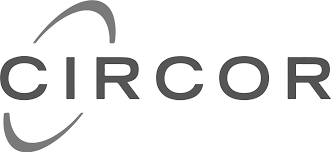What 93% of Home Service Pros Miss (and Why It’s Costing Them Leads)
You ever land on a home service website—say, HVAC, plumbing, landscaping—and think: “Are these folks even in my city? How do I reach them… right now?” Here’s a stat that should jolt you awake: 93% of home service websites bury their phone number or service area info (or skip them entirely on half their pages). That means 9 out of 10 companies are making it way harder than it should be for a hot customer to call or trust they’re in the right place. That’s lead paralysis in action.

Let’s break down why your phone number and service area need to be right in their line of sight—on every page—and how to get it done without annoying, desperate popups.
Why Just a “Contact” Page Kills Your Conversion Rate
Picture this: a homeowner spots your service on Google, clicks a blog post (say, “5 Signs You Need a Sewer Line Inspection”) and decides—like right now—they want to call. But your number’s only on the contact page, buried in the footer or shown as a tiny icon in the nav bar. Even if you think your site’s “obvious,” most people bounce if they have to dig for info. Studies show adding a prominent phone number to every main page boosts call rates 16–38% in service trades (CRA).
Why Service Area Matters—Even if You Think “Locals Know”
This is one of the home service web’s weirdest blind spots. Owners assume everyone knows they serve “greater Dallas”… but Google and new homeowners don’t. Search engines pull location signals from your page content and schema—not just your About page. Lack of clear, repeated address and territory info is a huge reason why even companies with a decade of reputation miss the map pack and fade in organic results.
Here are the behind-the-scenes SEO reasons:
- Clear service area listed on every page = higher local relevance (Google Local Pack loves this).
- Consistent address + phone shows you’re a real, established business.
- More “near me” leads: Human visitors and voice search both scan for city/town names, not just zip codes.
How to Place Phone Number & Service Area On Every Page (Without Looking Desperate)
1. Header Placement that Sells “Real Business”
Your header is your first and best real estate. Pop your phone number (TEXT, not an image) top-right or top-left—where it feels natural. Bonus points for using a <a href="tel:5551234567"> tag: mobile visitors can tap to call instantly.
Most effective pattern:
Keep it above main navigation. Shrink it a bit for mobile, but don’t hide it behind a hamburger menu. If you use a sticky nav, your number should be sticky too.
2. Make Service Area Concrete, Not Vague
Skip “we serve the region.” Add real city or county names or at least your County + “surrounding areas.” If you have a multi-city territory, a compact “Our Service Area: Denver, Aurora, Lakewood & more.” lives fine in your header or right under the nav on every page.
Why? It scratches two itches at once: the search engines see it and the nervous new homeowner gets instant confidence.
- Don’t just put it in your footer—repeat it in the header or a sticky sidebar stripe.
- Update it as your territory grows (and remove towns you don’t want, to cut wasted leads).
3. Don’t Forget the Blog, Landing Pages and Guides
The most overlooked “leak” for lost leads is your blog and resource section. These often attract the most traffic from Google (especially for “can I fix…” or “cost to repair…” searches). Every single standalone page should feature your phone number and location—ideally before the reader scrolls.
Plug the info into:
- Your article’s intro or in a slim colored bar at the top
- An after-paragraph call using
<div>or<aside>so it’s skimmable but not intrusive - Within longer “about the author/company” blurbs
The Hidden Credibility Boost: You Look Twice as Legit
Consumers search for real signs of legitimacy. Consistent phone and location data across your site sends subtle (but vital) credibility cues:
- Authority: You’re not a fly-by-night or out-of-state call center
- Trust: No one wants to call a business if they feel unsure where you’re located
- Competence: You make things easy—before they even dial
What About SEO? (And Why Schema Alone Isn’t Enough)
Many agencies stick your NAP (Name-Address-Phone) in website schema and pat themselves on the back. While schema’s a ranking factor, Google (and Bing and Apple Maps) start with what humans see in your content. If it’s buried, inconsistent or weirdly formatted, your rankings hit a wall.
For best results:
- Make sure your phone number and city/county location appear in readable text, not just in code
- Keep formats identical to your Google Business Profile (same number, abbreviations, etc.)
- Check for errors—wrong digits or old towns can make you look not just sloppy, but suspicious
But Won’t It “Feel Pushy” or Look Like a Scam Site?
There’s a right way and a wrong way here. The trick is repetition with restraint:
- Clean, professional display in header and a secondary mention in or near the footer
- Gentle colored bars between content sections (avoid popups, overlays or screaming neon boxes)
- For mobile, keep number at the top or as a sticky call bar—but not blocking half the screen
You want a “we’re easy to reach” vibe—not a carnival barker.
How Fast Can You Make This Update?
If your website uses WordPress or any modern builder, these changes can be made across all templates in under 20 minutes:
- Edit the Header template: Add/tweak your phone number + service area bar.
- For blog or landing page templates, check for “above the fold” visibility and repeat after major content blocks.
- Preview on mobile and desktop. Test: Can you call yourself from every page in two clicks or less?
Don’t Let the Simple Stuff Cost You Big
At the end of the day, the easiest lead is the one who already wants to call you. Don’t force them to hunt. Make your phone number and service area so obvious, it’s the last thing they see before they act.
Pull up your home page, blog and a random old post. Is your number up top and your towns front and center? If not—fix it. Watch your call volume jump.
One Takeaway: Make Contact a No-Brainer
The secret’s out: Adding your phone number and service area on every website page instantly makes you more approachable, credible and findable—in the eyes of human customers and Google alike. It’s (almost) too simple. But that’s why it works.
Want your site to turn traffic into live leads, not “maybes”? Start by putting your contact details where they can’t be missed. You’ll beat the 93% stuck in “Contact Us” limbo—and the phone will ring more than ever.
One quick change, huge result: Audit your site’s visibility for your phone number and service area this week. That’s your edge—no ad budget required.






























